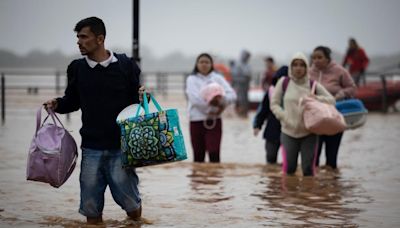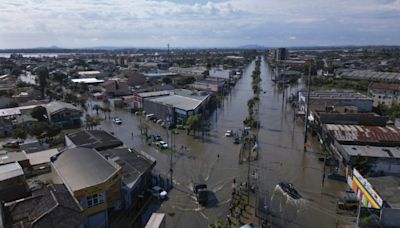Search results
Aug 14, 2021 · The Rio Grande River is a principal river in North America that forms part of the United States -Mexico border and serves as the border between Texas and four Mexican states of Tamaulipas, Coahuila, Nuevo Leon, and Chihuahua. In Mexico, the river goes by the name Rio Bravo del Norte.
Whatever you call it, however you know it, the Rio Grande, at nearly 2,000 miles long, is the 3rd longest river in the continental US, and a source of life for the more than 6 million people and countless wildlife species and ecosystems that rely on it.
Jul 16, 2020 · July 16, 2020. • 10 min read. The Rio Grande, in this part of northern New Mexico, hides in plain view. It is the landscape’s most important feature, but has a shyness about it. Churning in its...
Learn More. Rio Grande - US-Mexico Border, Source-Sea: Probably the first Europeans to see any part of the Rio Grande were those of an expedition sent out in 1519 to survey the coast of the Gulf of Mexico. The maps that illustrated this voyage, however, show only nameless indentations for the mouths of rivers on an otherwise smooth coastline.
Rio Grande , in Mexico Río Bravo, River, North America. One of the longest rivers of North America, it flows 1,900 mi (3,060 km) from its sources in the Rocky Mountains of southwestern Colorado, U.S., to the Gulf of Mexico. It rises high in the San Juan Mountains and flows generally south, passing southeast and forming the entire border ...
Aug 21, 2023 · For 1,250 miles, the Rio Grande forms the boundary between the United States and Mexico. In a remote stretch in West Texas, the river makes a curve to the northeast to form the “big bend.”. Winding its way through deep canyons and vast desert expanses, it is here that the wild character of the river lives on.
Sep 10, 2020 · The Rio Grande flows for almost 2,000 miles, from the snowy San Juan Mountains to subtropical plains and the Gulf of Mexico. Yet most of its journey is through the desert, and its impact here is immense. Many communities wouldn't exist without it. Wildlife relies upon it.


